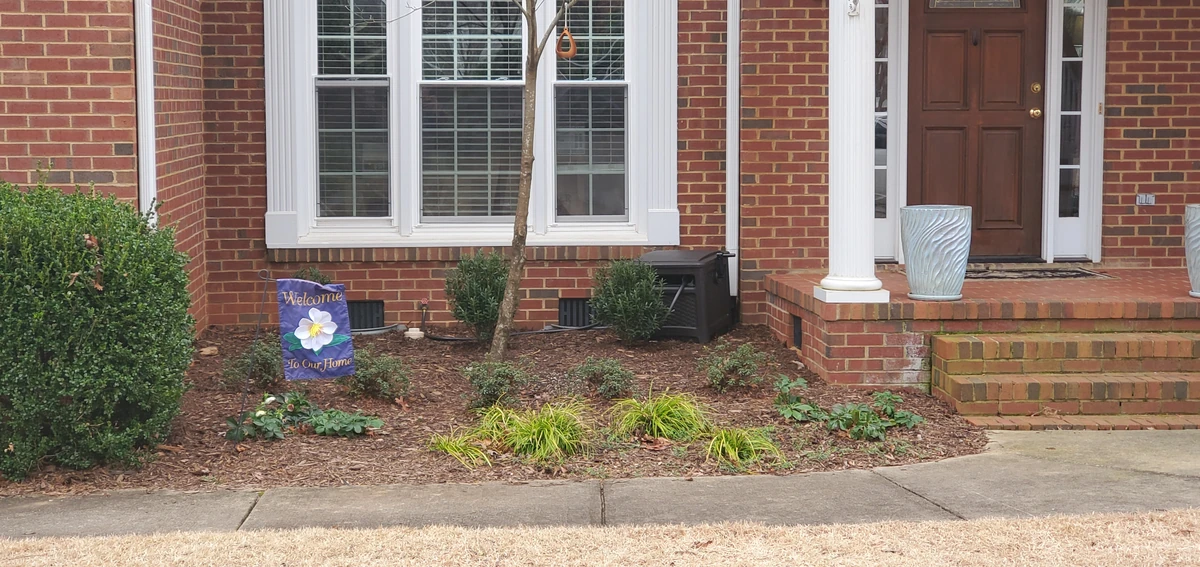Landscaping Practices For Fall To Prep Your Yard for Winter
Introduction: Fall is the season when the yard can breathe. Colors shift, growth slows, and your outdoor space finally gives you a minute to catch up. With a few practical landscaping moves right now, you set yourself up for a calmer winter and a head start when spring decides to show.
Fall Landscaping Best Practices You Can Actually Keep Up With
Smart Cleanup And Bed Prep For A Fresh Start
Think of fall as your reset button. Start by clearing out annuals that have clearly finished blooming, then tidy perennials just enough to prevent slick mats in the first big rain. Leave sturdy seed heads where they look good and feed birds, and cut back the plants that collapse into a mess around paths or patios. This is not about making everything bare. It is about giving each bed a cleaner outline so the structure of your landscape design shows through when leaves drop.
Soil is the quiet hero, and fall is its favorite season. Pull weeds before they harden off and scatter seed, then lightly loosen the top layer of soil in open spots so water can sink in rather than sheet away. Rake out old mulch clumps and stray stones, and make sure the grade still tips gently away from the house. These small passes do not require a whole weekend, yet they make beds look purposely maintained and ready for the next layer.
Mulch, Soil Care, And Watering Tweaks In Cooler Weather
A fresh layer of mulch in fall does more than look tidy. It buffers temperature swings, slows erosion, and keeps soil moisture steadier as nights cool down. Aim for a moderate depth and pull it back a little from trunks and crowns so air can move. If leaves collect, shred a portion and blend them under the mulch in larger beds. That mix feeds the soil life that plants depend on, and it is an easy way to return nutrients to the ground without fuss.
Watering needs change with shorter days. Plants still drink, just not as fast. Instead of sticking to a summer rhythm, check the soil with your hand and water only when it feels dry a couple of inches down. New plantings appreciate a slower soak, so roots dive rather than sit near the surface. A quick audit of hoses, drip lines, and spray patterns keeps moisture landing where you intend, which is a small but meaningful part of smart landscaping in the shoulder season.

Landscaping And Landscape Design Choices That Shine In Autumn
Outdoor Rooms, Paths, And Simple Structure That Guide The Eye
Your yard reads differently in fall light. This is a good time to strengthen the bones of the space so it still feels welcoming after the flowers take a bow. Define the main route from drive to door with a comfortable path and subtle lighting that helps on early evenings. Where furniture gathers, carve a simple outdoor room with a stable surface and a clear edge so chairs stop shimmying. When the structure carries more of the look, you are not relying on constant blooms to hold attention.
Small focal points carry more weight now. A sculptural pot at a bend in the walkway or a weathered bench tucked under a small tree creates a pause that feels intentional. Use repeating materials to tie things together, like the same stone along a path and as a border near the patio. Repetition calms the view without making it stiff. This is the heart of livable landscape design in the fall. Gentle lines that move feel natural, and a few anchors that stand up when the rest of the garden rests.
Native Planting Layers For Color, Habitat, And Low Fuss
Native planting pays you back twice in autumn. Many natives hold their color longer, then fade into handsome seed heads that catch light and feed wildlife. Place taller species at the back where they sway without leaning over paths, then tuck mid-height shrubs to frame sightlines from windows you actually sit near, close to steps and entries, thread in compact varieties that keep their shape so the approach stays neat even when leaves drift around.
Think in friendly layers rather than a single row. Evergreen structure gives winter backbone, deciduous shrubs deliver fall flare, and perennials knit the ground plane together. Choose textures that play well together so you are not relying on high-maintenance color to do all the work. Once established, natives typically settle into the local rhythm with less coddling. That means fewer emergency waterings, fewer surprise flops, and a garden that feels in step with the season instead of fighting it.

Cold-Weather Landscaping Maintenance That Sets Up Spring
Turf, Edges, And Leaf Strategy That Protects The Lawn
A crisp edge is the fastest way to make a yard look cared for. Use a flat spade to refresh the line where turf meets beds so mulch stays put and the grass does not creep during the off months. Manage leaves with intention rather than chasing every last one. Light layers can be chopped with a mower and left to settle between blades, while thicker piles should be relocated into beds where they act like a blanket beneath shrubs. You protect turf from smothering and gain free organic matter in your plantings.
Mind the timing of your final cuts as growth slows. Mow when the lawn is dry and standing up, and keep the height sensible so crowns are protected. Avoid cutting on frosty mornings since bent blades take weeks to recover, and those scars tend to stare back at you all winter. A quick sweep of the driveway and walk after yardwork keeps grit and clippings from staining surfaces in the next rain. Little touches like that make the whole property read cleaner.
Plant Protection, Hardscape Care, And Light Touches
Tender or shallow-rooted plants appreciate a bit of help before the real cold arrives. Top vulnerable areas with a measured mulch ring, stake young trees where wind funnels between structures, and gently tie up floppy stems that ice would otherwise snap. Inspect ties on vines and replace anything that could cut into bark as wood swells with moisture. These small safeguards reduce winter breakage and make spring cleanup less of a scramble.
Hard surfaces deserve a check, too. Brush debris out of paver joints and top off polymeric sand where traffic has loosened it. Clear any drainage at the low points of patios so water does not linger and leave stains. If lighting helps you navigate on dark evenings, confirm fixtures are upright and connections are snug before cold settles in. None of this is fussy. It is a light circuit that keeps your landscaping comfortable and dependable while the weather does its winter thing.

Conclusion
Fall favors the Five Forks SC homeowner who keeps it simple. Clear the clutter, strengthen the structure, lean into native planting that belongs, and give soil a little kindness so it can do its quiet work. If you want a plan that fits your space and your schedule, Solomon’s Landscape & Design is ready to help. Reach out to shape a practical fall landscaping list, fine-tune your landscape design, and set up a yard that feels calm now and eager for spring.
Cannot say enough good things about them. Incredibly fast with the amount of work that needed to be done. Professional, great yard design, and good follow-through. Track lights on the front of the house really add a festive atmosphere.
Janice Watson
★★★★★
Did a great job!! Can't wait to see it next year when it starts to spread out!! Ed came and gave us some ideas, but also listened to us. Really could not be happier. The two gentlemen who came to do the job were extremely courteous and professional!!
Jim Transue
★★★★★
Ed and his team were always professional and very hardworking. They did a great job for us. Highly recommend them!
LC
★★★★★
We were so glad we got Solomon to put lights on our house this year. It was six weeks of happiness every evening. I loved turning onto our street and seeing the house all lit up. Glad we did it
Rick Burris
★★★★★
Ed and his team did a great job bringing my yard back to life! I’m looking forward to more projects with them in the future!
Christen Concini

 (864) 518 9904
(864) 518 9904